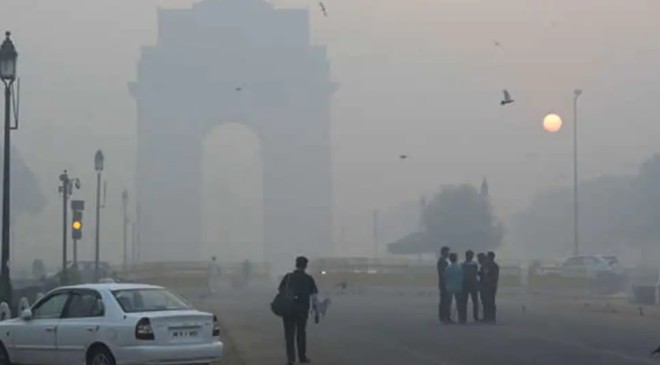Out of 4,041 cities and towns, only 476 have monitoring systems – manual or real-time. The current national monitoring grid is only 6% to 8% of the recommended requirement
Air quality monitoring across India remains sparse despite the ever-growing challenge of pollution. Out of 4,041 cities and towns, only 476 have monitoring systems – manual or real-time, shows a new study by Centre for Science and Environment (CSE).
Read More: PM Modi to Launch Delivery of 1.6 Crore Ayushman Cards in UP on Friday
A majority of the cities (267) have manual stations; 98 cities have only real-time stations; and 111 cities have manual as well as real-time stations. But only Chandigarh, Delhi and Goa have full population coverage under the combined monitoring network. This leaves out at least 47 percent of the population, which lives outside the 50-km radius coverage of the air quality monitoring network.

“The limited air quality monitoring has made it challenging to identify non-attainment status of a vast number of towns/cities and regions. It has also impeded effective evaluation of clean air action and improvement in air quality. More harmful PM2.5 and ozone are not even considered for compliance under the National Clean Air Programme (NCAP) due to limited monitoring and data,” said Anumita Roychowdhury, executive director of the CSE.
Read More: Chandrayaan-3: India’s Moon Mission Set for Launch on July 14 | All You Need to Know
According to the team, air quality reported by a station can represent ambient air in its 2-km radius but it can also be used for measuring ambient air 2 km to 10 km away from the station. And, if no major topographical or human-made features exist, then the air quality reported at a station can also be considered a good proxy for ambient air 10 km to 50 km away from the station.
The analysis covers about 883 manual stations under the National Air Quality Monitoring Programme (NAMP) and 409 real-time stations under the Continuous Ambient Air Quality Monitoring System (CAAQMS), as reported by the Central Pollution Control Board (CPCB).
The number of manual monitoring stations have doubled since 2010, and the number of real-time monitoring stations have grown 20 times in that time period. But the current national monitoring grid is only 6 percent to 8 percent of the recommended requirement. In terms of districts, over half of a total of 755 districts have no air quality monitoring stations, whether manual or real-time.
Read More: Modi Surname Case: Gujarat HC Verdict on Rahul Gandhi’s Plea for Stay on Conviction Today
Researchers also highlighted that the current monitoring network is riddled with problems of inadequate data generation, lack of data completeness and poor quality control of monitoring.
“The current urban monitoring grid is highly concentrated in a few big cities and there are vast areas in other regions with no monitoring at all. This needs to be rationalised to cover a wider population and habitats to support implementation of clean air action plans, provide information to the public about the daily risks and design emergency response and long-term action,” said Avikal Somvanshi, senior programme manager at CSE.
Also, fewer than 200 cities that have systems in place monitor all the six key criteria pollutants – particulate matter (PM2.5 and PM10), sulphur dioxide (SO2), nitrogen dioxide (NO2), carbon monoxide and oxidants like surface ozone.
“There is not only a need to expand the monitoring network to all communities, especially vulnerable sections, but also important to include all pollutants that pose a higher public health risk,” the team said.





































